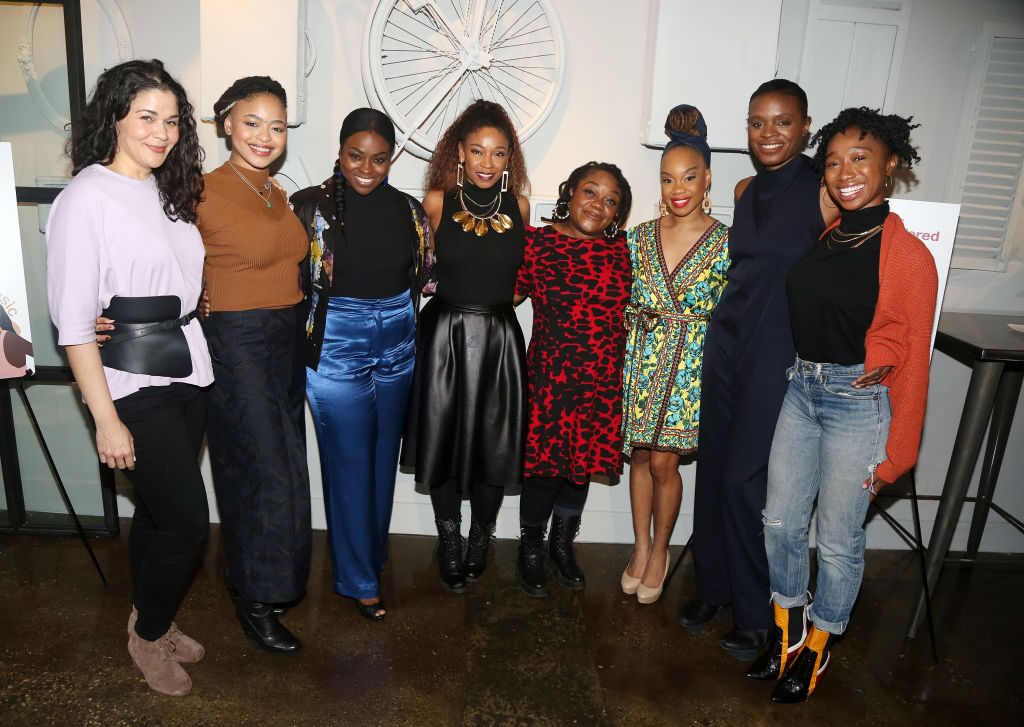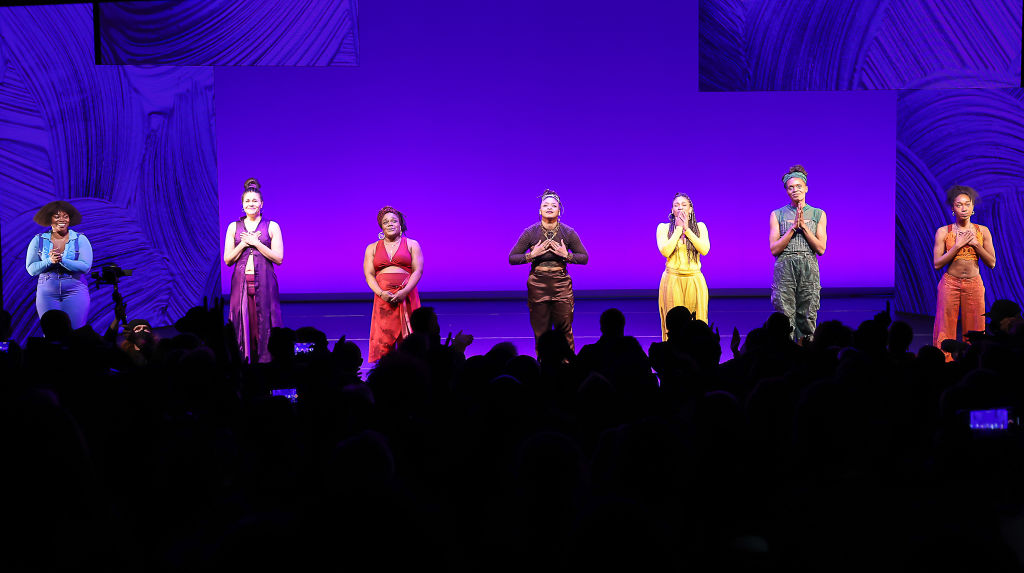
Source: Bruce Glikas / Getty
When I think of for colored girls, the 2010 film directed by Tyler Perry and the emotional rollercoaster I was on for nearly two hours comes to my mind. The film was beautifully made but the horrors the characters faced throughout the film hit you with blunt force, which is overwhelming for some. The pain and suffering that was woven into the film stole attention away from the poetic monologues at times—which is the heart and soul of the original work. The film is an adaptation of Ntozake Shange’s “for colored girls who have considered suicide/ when the rainbow is enuf,” which debuted in 1976. Unlike the film, the original work doesn’t quite have plot and has a flow of vivid poetic monologues intertwined with choreography, hence why it’s called a choreopoem. The nearly 40-year-old production returned to Broadway and if you think it’s anything like the movie, you’ve got the wrong idea.
“I think that what one of the things that [director Camille Brown] is helping us to do is tap into is the joy that lives within these women,” Stacey Bottom, who plays Lady in Blue, told MADAMENOIRE.
“[In the movie adaptation of for colored girls] I just remember a lot of darkness, a lot of pain and not to say that that doesn’t exist, but there’s also tons and tons of joy in women coming together and lifting each other up. And I feel like in the theatrical version that we’re bringing to the stage is really highlighting that and just making sure that all of those colors are within it. And you know, it’s not just pain and suffering because it’s Black.”
Amara Granderson, who plays the Lady in Orange, told MADAMENOIRE that Brown’s version of the choreopoem is more emblematic of Shange’s original and embodies more hope than horror.
“There’s definitely an acknowledgement of pain,” she said. “But in totality, it is a reclamation of our whole experience. So there’s not a sense of woe-is me even if we bring up things that are woeful and devastating. [Sometimes we watch shows and] we feel like wow, ‘I wish this person didn’t have to experience this thing’. Even in moments like that we’re still able to reclaim our holistic experience through this piece.”

Source: Arturo Holmes / Getty
“For Colored Girls” returning to Broadway marks a historical one for director Camille Brown. This will be the first time in 65 years that a Black woman will serve as both director and choreographer on a Broadway production.
“I can’t fathom that I’ve been given this opportunity,” Brown said. “But I can also fathom that it took 65 years for another Black woman to be in this space in this way. So there are a lot of things that I feel like excitement, but also a tremendous responsibility. No, you’re holding, carrying the legacy of Katherine Dunham and pushing that forward and trying to do your best to honor the ancestors like this. It’s a lot. It’s a lot of holding.”
RELATED CONTENT: ’What If Poetry Isn’t Enough’: Ntozake Shange Explains How Illnesses Stifled Her Work
For Colored Girls is part of a resurgence of Black productions on Broadway, being one of the eight shows with Black playwrights. D. Woods, who plays Lady in Yellow, said this rebirth of Black Broadway is long overdue.
‘It’s time. it’s time to not being hidden,” she said. “It’s time to not apologize. It’s time to stop asking for approval and, just taking it. We’re reclaiming.”
One thing that makes this production stand out from others on Broadway is that it is dance-oriented. D. Woods described the choreography as being “part of the storytelling as much just as much as our language.” Alexandria Wailes, who stars as the Lady in Purple, added that the choreography is so interlaced with the text that it’s hard to imagine them as two separate parts of the production.
“The body is a vessel for holding all these different kinds of emotions that can pop up in different areas of the body,” Wailes, who is deaf, said. “And then you add on the layer of the text that can become multi layered. I don’t know what the word is, perhaps, but the signing how you find the inner and outer life of what people are experiencing, what they’re taking in, what doesn’t matter what level you’re taking it in, that it’s taking it in, through movement, perhaps through your ears, or taking it in together both audible and movement. And so it’s integrated into everything. Amount, it’s emotional in this piece. It’s I think it’s hard to imagine a separation of everything, because everything has a reason.”
Other stars of the choreopoem include Kenita R. Miller as Lady in Red, Tendayi Kuumba as Lady in Brown and Okwui Okpokwasili as Lady in Green.
Get tickets to for colored girls who considered suicide/when the rainbow is enuf here.
RELATED CONTENT: Let It Be Known: Ntozake Shange Was Here

0 Commentaires